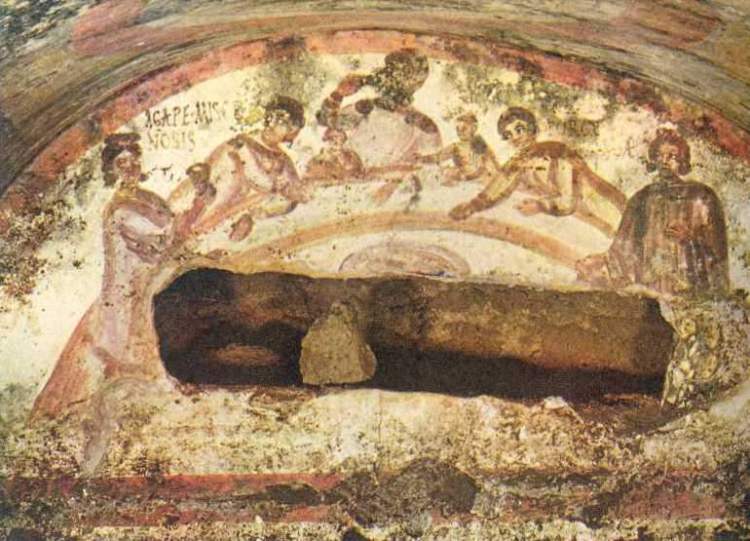
Jesus and the two disciples On the Road to Emmaus, by Duccio, 1308-1311, Museo dell’Opera del Duomo, Siena.
Two friends walk along the road, speaking quietly to one another. They are hopeless. They are sad. When Jesus was alive, they were full of hope; he would redeem their nation, set them free. But Jesus is dead, and with him, all their hopes.
A stranger appears. “What have you two been talking about?” he asks. The friends look at each other, and then at the stranger. What else would they be talking about? For three days, all that anyone has talked about is the fact that Jesus—the one that was hoped to be the Messiah, the one to redeem Israel—is dead.
“Do you really not know what has been going on around here recently?” they ask.
“Tell me,” says the stranger.
They tell him. Jesus—the prophet who was so powerful, who healed the sick, gave sight to people who were blind, fed thousands of people with just five small loaves and two fish, and who taught everyone about the kingdom of God—is dead.
“We had hoped that he would be the one to redeem us,” they say, “but now he has been dead for three days. Even worse, now there are odd stories about his tomb being empty, and women seeing visions of angels telling them that Jesus is alive again.”
“Well,” said the stranger, “don’t you realize that all of your Scriptures say that the Messiah, the one to redeem Israel, would have to suffer and then enter into glory?”
Far from being a tragic and unexpected turn in the story, this suffering and death–and the transformation of that suffering into glory, that movement from death to life–had to happen, if Jesus was really the Messiah.
They must’ve wanted to hear more from this stranger, because they invite him to stay.
And when the stranger takes bread, gives thanks for it, and breaks it, they suddenly realize: the stranger is Jesus!
Jesus, who taught them about the kingdom of God, who healed the sick, who gave sight to the blind, and who fed thousands of people with just five loaves and two fish; this Jesus was now breaking bread and giving it to them. Their eyes were opened in the breaking of the bread. They were blind to who he was, but now they could see. It is a miracle.
And then, suddenly, Jesus is gone.
But he is not really gone. Once they come to understand that he is not dead at all, they realize that he still is the one to redeem all people.
Knowing this, they cannot stay where they are.
Though they’ve been traveling for much of the day, they immediately return to Jerusalem to tell everyone what has happened: Jesus has risen. Jesus is alive again. We recognized him when he shared bread with us.
It’s typical of Luke’s gospel that their transformation in understanding who Jesus is should take place over a meal. It even sounds a bit like the first meal in the Bible, but in reverse. When Eve and Adam eat the fruit, their “eyes are opened”; when these two take the bread that Jesus has broken, their eyes are opened and they recognize him, and the truth and power of his teaching:
“were not our hearts burning within us while he talked with us on the road and opened the Scriptures to us?”
The one who redeems us lives, and we want everyone to know. We will make him known as we continue to break bread in his name.
“Eating together was an important aspect of the early church’s
common life—a powerful symbol of unity both with Christ and
with one another. Eating with the poorest, the weakest and the
most vulnerable is an essential aspect of those early Communion
meals.” (Eat With Joy, p. 68)
“As God betstoweth his benefites upon us, let us beware that
wee acknowledge it towardes him, by doing good to our
neighbors whome he offereth unto us, so as wee neither
exempt ourselves from their want, not seclude them from
our abundance, but gently make them partakers with us, as
folke that are linked together in an inseparable bond.” (John Calvin, sermon on Deut. 15)











